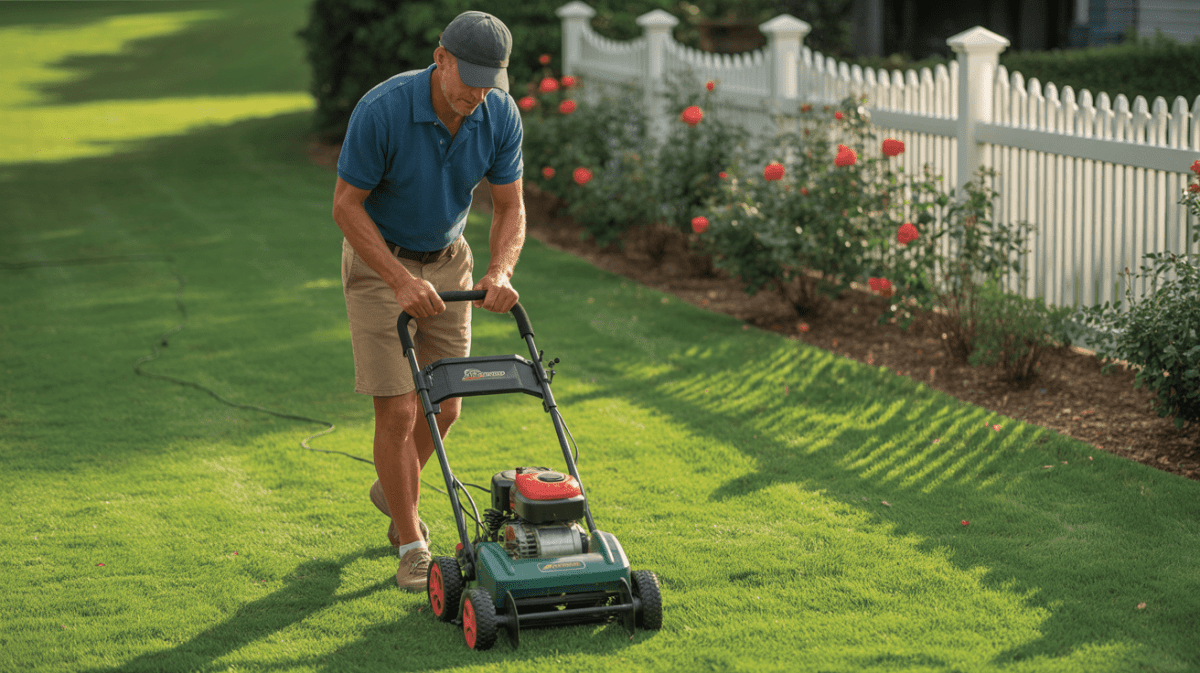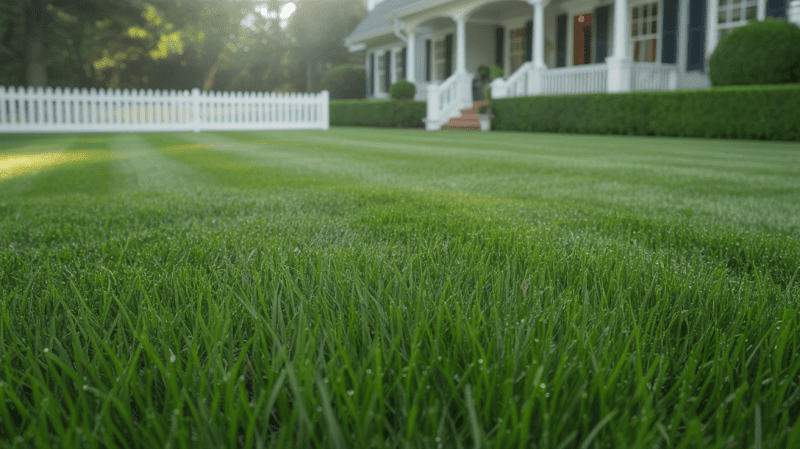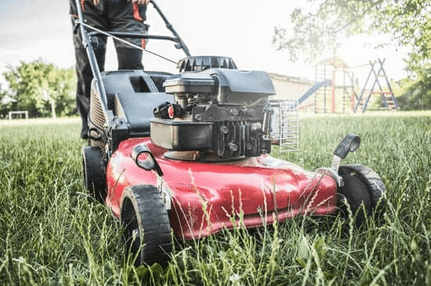Unlock your lawn's potential with simple aeration tips:

The Importance of Aeration: When and How to Do It
Many homeowners love having a healthy, lush lawn. Simple tasks, such as aeration, can make a significant difference. Aeration helps your lawn grow thicker and healthier when done right.
Aeration removes small plugs of soil and grass. This allows air, water, and nutrients to reach the roots more effectively. It makes your lawn look better and stay strong.
Key Takeaways
-
Aeration is a simple, effective way to improve lawn health.
-
Proper timing is crucial for effective aeration.
-
Aeration allows air, water, and nutrients to reach the roots.
-
A well-aerated lawn is more vibrant and resilient.
-
Regular lawn care tasks, including aeration, can lead to a thicker, healthier lawn.
Understanding Lawn Aeration and Its Benefits
Aerating your lawn is a simple yet effective way to enhance soil health and promote grass growth. Lawn aeration involves creating holes in the soil to alleviate compaction. This allows air, water, and nutrients to reach the grass roots more effectively.
What Is Lawn Aeration?
Lawn aeration is a process that removes small plugs of soil and grass. This reduces soil compaction. It improves airflow, water penetration, and nutrient uptake, which are essential for healthy grass growth. By creating these small holes, aeration helps to break up compacted soil, promoting a healthier root system.
Why Your Lawn Needs Proper Aeration
Proper aeration is crucial because it addresses the issue of soil compaction. Soil compaction can occur due to various factors, including heavy foot traffic, soil type, and inadequate watering practices. Compacted soil can prevent grass roots from receiving the necessary oxygen, water, and nutrients. This leads to poor grass health and increased susceptibility to disease and pests.
Key Benefits for Soil Health and Grass Growth
The benefits of lawn aeration are numerous. It enhances soil health by improving its structure. This allows for better water infiltration and reduces soil erosion. Aeration promotes grass growth by providing the roots with the necessary resources to grow deeper and stronger. A well-aerated lawn is more resilient to environmental stresses and requires less maintenance over time.
When Is the Best Time to Aerate Your Lawn?
The timing of lawn aeration is key to its success. Aerating at the right time boosts your lawn's health and looks.
Seasonal Timing for Cool-Season vs. Warm-Season Grasses
Cool-season grasses do best in early fall or early spring. These times help them grow and recover well. For warm-season grasses, late spring or early summer is the best time. This matches their peak growth period.
Signs Your Lawn Needs Aeration Now
Look out for these signs to know when to aerate:
-
Heavy foot traffic or soil compaction
-
Poor drainage or waterlogging
-
Thatch buildup
-
Slow growth or poor grass health
These signs indicate that your lawn may benefit from aeration to improve its condition.
How Often Should You Aerate?
The aeration frequency varies depending on the grass type and soil. Cool-season grasses often need annual aeration. Warm-season grasses might only need it every 2-3 years. Lawns with heavy clay soil or lots of foot traffic may need more frequent aeration.
How to Determine If Your Lawn Needs Aeration
Checking if your lawn needs aeration is easy. It helps your soil and grass grow better. Look for signs of soil compaction and poor aeration to make an informed decision.
Simple Tests to Assess Soil Compaction
The "screwdriver test" is a reliable method for checking soil compaction. If a screwdriver doesn't go in easily, your soil might be compacted. Soil compaction stops air, water, and nutrients from reaching your grass roots.
You can also do a "footprint test." Step on your lawn and see if it bounces back. If it doesn't, your soil might be too compacted.
Visual Indicators of Poor Soil Aeration
Visual signs can show if your lawn needs aeration. Look for poor drainage, where water stays on the surface. Other signs include slow grass growth, discoloration, or more weeds.
If you see these problems, it's time to aerate your lawn. This will help your soil and grass health improve.
The Importance of Aeration: When and How to Do It Properly
Lawn aeration is key to a healthy lawn. It makes holes in the soil for better air, water, and nutrient reach. The right method and timing are essential for success.
Core Aeration vs. Spike Aeration: Which Method Is Best?
There are two main aeration methods: core aeration and spike aeration. Core aeration removes soil plugs for better aeration without compaction. Spike aeration pokes holes but might compact the soil more. Experts say core aeration is better for dense soils because it aerates and reduces density.
Aeration Depth and Pattern Guidelines
The depth and pattern of aeration matter a lot. The aeration depth should be 2-3 inches, based on soil and grass type. A grid-like aeration pattern is best for even coverage. Airing in different directions also boosts benefits.
Combining Aeration with Overseeding and Fertilization
For optimal results, aeration should be combined with overseeding and fertilization. Overseeding fills bare spots and improves density. Fertilization adds nutrients for growth. Experts say this combo greatly improves lawn health and recovery.
By following these tips, homeowners can significantly improve their lawn's health and appearance.
Step-by-Step Guide to Aerating Your Lawn
Aeration is crucial for a lush, vibrant lawn. It improves soil drainage and promotes healthy grass growth. It also enhances the appearance of your lawn.
Preparing Your Lawn Before Aeration
Before aerating, prepare your lawn. Ensure the soil is moist for better results. Remove any debris like rocks or twigs to avoid equipment issues.
Choosing the Right Aeration Equipment
The choice between manual and machine aerators depends on your lawn's size and your preference.
Manual Aerators vs. Machine Aerators
Manual aerators are good for small lawns and are affordable. Machine aerators are better for large lawns, saving time and effort.
Rental vs. Professional Services
If your lawn is large or you prefer not to aerate it yourself, consider renting a machine aerator or hiring professional services. Professionals ensure the job is done right.
The Aeration Process: Detailed Instructions
To aerate your lawn well, make multiple passes, focusing on compacted areas. This improves soil drainage and air circulation.
Post-Aeration Lawn Care Tips
After aerating, consider overseeding and fertilizing to maximize the benefits of aeration. Keep the soil moist to support new growth.
By following these steps and tips, you can successfully aerate your lawn. This will lead to healthier and more vibrant grass.
Conclusion: Making Aeration Part of Your Lawn Care Routine
Adding aeration to your lawn care can make a big difference. It boosts soil health and grass growth. This leads to a vibrant lawn.
Regular aeration keeps your lawn healthy. It lets air, water, and nutrients reach the roots. This makes your grass strong and dense.
By incorporating aeration into your regular lawn care routine, you'll reap numerous benefits. Your soil will improve, grass will grow better, and your lawn will look amazing. So, check your lawn's needs, pick the best aeration method, and see the difference for yourself.



